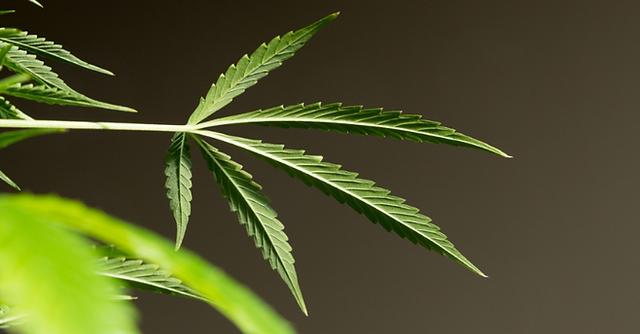Are you curious to know what is PHC cannabinoid? You have come to the right place as I am going to tell you everything about PHC cannabinoid in a very simple explanation. Without further discussion let’s begin to know what is PHC cannabinoid?
The cannabis plant contains numerous compounds, including cannabinoids, which have gained significant attention in recent years due to their potential therapeutic benefits. One such cannabinoid is PHC (p-hydroxycannabidiol), a lesser-known compound that is emerging as a subject of interest in the field of cannabis research. In this blog post, we will delve into what PHC cannabinoid is, its characteristics, and its potential implications within the cannabis industry.
What Is PHC Cannabinoid?
PHC (p-hydroxycannabidiol) is a naturally occurring compound found in the cannabis plant. It is a derivative of cannabidiol (CBD), another well-known cannabinoid. PHC is formed through a process called oxidation, where CBD interacts with oxygen, resulting in the conversion of certain molecular structures.
Characteristics And Properties:
- Chemical Structure: PHC is structurally similar to CBD, with the addition of a hydroxyl (-OH) group attached to one of the carbon atoms. This alteration in structure gives PHC its unique properties and potential therapeutic effects.
- Psychoactive Effects: Unlike tetrahydrocannabinol (THC), the cannabinoid primarily responsible for the psychoactive effects of cannabis, PHC is not known to have psychoactive properties. It does not induce the “high” commonly associated with THC consumption, making it potentially suitable for individuals seeking the potential benefits of cannabinoids without the intoxicating effects.
- Potential Therapeutic Benefits: Research on PHC is still in its early stages, and limited studies have been conducted on its specific therapeutic effects. However, preliminary research suggests that PHC may possess anti-inflammatory, analgesic (pain-relieving), and neuroprotective properties, similar to other cannabinoids like CBD.
- Synergistic Effects: PHC is often found in cannabis strains alongside other cannabinoids, such as THC, CBD, and others. These cannabinoids can work synergistically, enhancing or modifying each other’s effects through what is known as the entourage effect. The potential interactions between PHC and other cannabinoids may contribute to the overall therapeutic benefits of cannabis-based products.
Implications And Future Research:
While the research on PHC is still evolving, it holds promise for potential therapeutic applications within the cannabis industry. As scientists delve deeper into understanding the properties and mechanisms of PHC, it may contribute to the development of novel cannabinoid formulations and cannabis-based medicines.
Further studies are needed to explore the specific effects of PHC and its potential applications in various health conditions, such as inflammation-related disorders, pain management, neurodegenerative diseases, and more. Continued research will shed light on the precise mechanisms of action and the full therapeutic potential of PHC, further expanding our understanding of the intricate world of cannabinoids.
Legal Considerations:
The legal status of PHC and cannabis-derived products can vary depending on the jurisdiction. It is essential to familiarize yourself with the local laws and regulations governing the production, sale, and use of cannabis and related compounds in your area.
Conclusion:
PHC cannabinoid, a derivative of cannabidiol (CBD), is an emerging compound within the complex world of cannabinoids found in the cannabis plant. While research is still limited, PHC shows potential for various therapeutic effects and may offer a non-psychoactive alternative for individuals seeking the potential benefits of cannabinoids without the intoxicating effects of THC.
As scientific exploration continues, the potential applications of PHC in the development of cannabis-based medicines and formulations may become clearer. As with any cannabis-related compound, it is essential to stay informed about local laws and regulations and consult with healthcare professionals for guidance and advice regarding its potential uses and benefits.
Learn more about similar topics like these on Clynerr
FAQ
What Are The Effects Of PHC?
When consuming PHC, you can expect intense happiness in both mind and body, offering especially a euphoric but calming effect and a release of tension in the body. Some of the most reported effects are: Strong mental and bodily experience. Chilled.
What Are The 3 Types Of Cannabinoids?
The three types of cannabinoids that people use are recreational, medicinal and synthetic. Research has found that the cannabis plant produces between 80 and 100 cannabinoids and about 300 non-cannabinoid chemicals.
What Is The Difference Between Delta 8 And Hhc?
For one, HHC is a more potent form of THC than delta 8 THC. Additionally, HHC is known to produce psychoactive effects while delta 8 THC does not. Finally, HHC is typically only found in small amounts in cannabis plants while delta 8 THC can make up a significant portion of a plant’s cannabinoid content.
What Cannabinoid Is The Strongest?
THC-P. This brings us to the last and most potent psychoactive cannabinoid on the market. THC-P is derived from the hemp plant and also extracted similarly to Delta-8 THC, but it’s wildly potent. THC-P is 30x stronger than Delta-9 THC, but some research indicates that it’s actually 33x stronger.
I Have Covered All The Following Queries And Topics In The Above Article
How Strong Is PHC
What Is PHC Drug
PHC Cannabinoid Structure
PHC Distillate
PHC Vs Thc-O
PHC Cannabinoid Safe
PHC Vape
PHC Gummies
What Is PHC Cannabinoid
What is PHC cannabinoid effect
Is PHC a cannabinoid?
